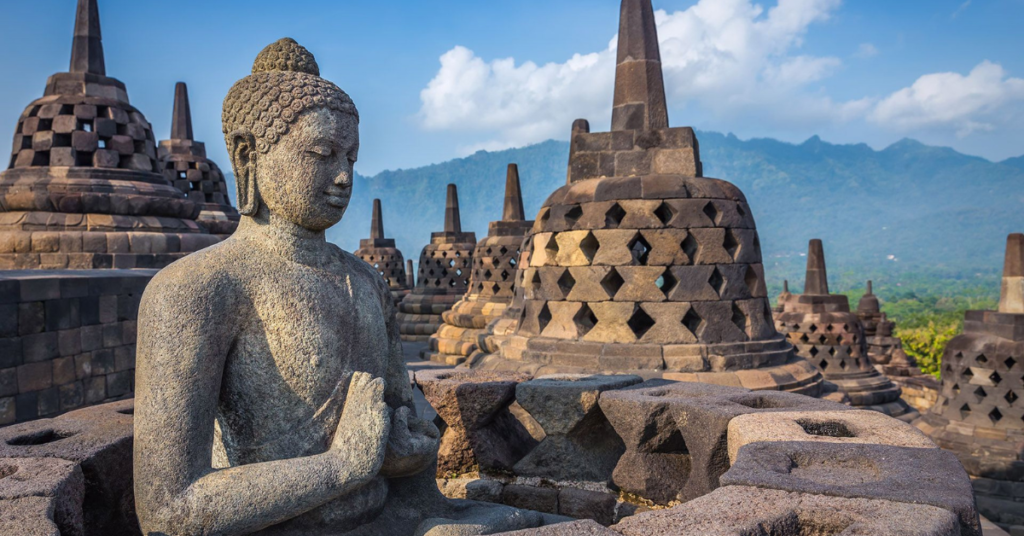Sacred Spaces: Spiritual Journeys to Cultural Landmarks

In a global pulsating with hustle and bustle, finding solace and religious rejuvenation becomes increasingly important. While the concept of sacred spaces transcends cultural limitations, every civilization has crafted its very own sanctuaries that replicate its precise nonsecular ethos. These locations, regularly referred to as cultural landmarks, serve as focal factors for pilgrimage, meditation, and internal reflection. Embarking on a journey to these hallowed sites offers not only a threat to hook up with one’s nonsecular roots but additionally, an opportunity to delve into the wealthy tapestry of human history and subculture.
Exploring Cultural Landmarks
Understanding the Significance
Cultural landmarks are more than just physical systems; they embody centuries of subculture, belief systems, and collective reminiscence. Whether it is the majestic cathedrals of Europe, the serene temples of Asia, or the historic ruins of the Americas, every landmark holds a tale waiting to be found. These websites frequently serve as dwelling repositories of know-how, where traffic can glean insights into the cultural, philosophical, and spiritual underpinnings of a society.
The Power of Pilgrimage
Pilgrimage has been a cornerstone of religious practice across cultures and religions. It is an adventure of self-discovery and transformation, guided by faith and devotion. Many cultural landmarks function as pilgrimage sites, drawing tens of millions of devotees each year seeking benefits, redemption, or sincerely a moment of readability. The act of pilgrimage fosters a sense of network and shared cause, transcending individual differences and connecting humans on a deeper, religious degree.
Architectural Marvels

One can not speak of cultural landmarks without marveling at the architectural brilliance that went into their introduction. From the complex carvings of Angkor Wat to the soaring domes of the Hagia Sophia, those structures stand as testaments to human ingenuity and craftsmanship. They aren’t simply monuments of the beyond however dwelling expressions of cultural identity and nonsecular aspiration, inspiring awe and reverence in all who behold them.
A Universal Language
Despite the range of cultures and religions, the appeal of cultural landmarks transcends linguistic and ideological limitations. They talk to something primal inside us, stirring emotions of wonder, reverence, and awe. Whether you are a devout believer or an earthly seeker, journeying those sacred spaces may be a profoundly transferring revel in, reminding us of our shared humanity and the everlasting quest for meaning and transcendence.
Preserving Heritage
In an age of fast urbanization and globalization, the upkeep of cultural landmarks has emerged as paramount. These sites no longer only preserve significant spiritual and cultural significance but additionally contribute to the socio-monetary cloth of their respective regions. Through sustainable tourism, conservation efforts, and network engagement, we can make sure that future generations inherit a global enriched through the legacy of our ancestors.
Conclusion: Nurturing the Soul, Preserving the Past
In a world fraught with uncertainty and trade, cultural landmarks provide a timeless sanctuary in which the human spirit can discover solace and concepts. Whether we are searching for enlightenment, communion with the divine, or in reality a second of respite from the chaos of modern lifestyles, these sacred spaces beckon us to embark on an adventure of the soul. As we traverse the hallowed halls of history, let us not forget our responsibility to cherish and defend these cultural treasures for generations to come back. In keeping the beyond, we shield the soul of humanity itself.
Frequently Asked Questions (FAQs)
Ans. People visit cultural landmarks for various motives, together with spiritual success, cultural enrichment, and historical exploration. These websites provide a glimpse into the past and offer opportunities for introspection and mirrored images.
Ans. While many cultural landmarks are associated with unique religions or cultures, their significance often transcends these barriers. People from diverse backgrounds go to those websites, drawn with the aid of their commonplace appeal and nonsecular resonance.
Ans. Before traveling to a cultural landmark, it is critical to research its history, importance, and cultural practices. Respect nearby customs, dress codes, and non secular traditions, and approach the experience with an open mind and a coronary heart.
Ans. Cultural landmarks serve as bridges between the beyond and the present, connecting humans throughout generations and fostering a deeper appreciation for cultural variety. They additionally make contributions to tourism, training, and cultural alternate, enriching our collective heritage.
Ans. You can support the upkeep of cultural landmarks by advocating for accountable tourism practices, donating to conservation efforts, and collaborating in community tasks aimed toward safeguarding these precious heritage websites.














